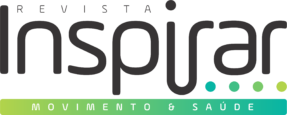 ☰
☰
 ☰
☰

Edição: Ed.3-JUL/AGO/SET
A auto liberação miofascial (ALM) é uma técnica de automassagem na musculatura utilizando um implemento que fornece respostas fisiológicas favoráveis para melhorar a performance antes do exercício.
Fábio Júnior da Silva1; Rafael Magalhães Carvalho dos Santos1; Elielbson Santos de Souza1; Jorge Raphael Lopes Arruda1; Ricardo Alexandre Rodrigues Santa Cruz1
A auto liberação miofascial (ALM) é uma técnica de automassagem na musculatura utilizando um implemento que fornece respostas fisiológicas favoráveis para melhorar a performance antes do exercício. Entretanto, a relação dessa técnica com o desempenho em modalidades esportivas coletivas ainda não está bem evidenciada na literatura. Portanto, o objetivo do estudo foi analisar o efeito agudo da ALM no desempenho da flexibilidade de jovens atletas de futsal. Participaram do estudo 12 atletas do sexo masculino pertencentes a uma equipe da categoria sub-17 (16,8±0,89 anos; 166±0,05cm; 62,1±5,58 Kg, 22,1±1,98 kg/m2, 10,8±0,98 %G). Os atletas realizaram avaliações antropométricas e em seguida o teste de sentar e alcançar pré e pós ALM. Para a realização da ALM foram utilizados os músculos piriformes, isquiotibiais, banda iliotibial, quadríceps, adutores e gastrocnêmicos. Todos bilateralmente. O tempo de estímulo sobre a musculatura específica foi de 30 segundos de trabalho por 15 segundos de recuperação. Foi utilizada a estatística descritiva e o teste T Student pareado para observar as diferenças pré e pós ALM para a flexibilidade. O valor significativo adotado foi de p<0,05. Os resultados mostraram aumento de 8,1% e diferença significativa para o desempenho da flexibilidade dos isquiotibiais após a utilização da ALM (pré: 38,4± 3,72/pós 41,5* ± 6,63). Pode-se concluir que a ALM foi capaz de interferir de forma aguda no aumento da flexibilidade dos atletas, indicando ser uma alternativa eficiente para ganhos dessa capacidade neuromuscular, podendo ser utilizada nas rotinas de aquecimento em treinamentos e competições no futsal.
Palavras-chave: Auto liberação miofascial; Flexibilidade; Futsal
Self myofascial release is a self-healing technique in the musculature using an implement that provides favorable physiological responses to improve pre-exercise performance. However, the relationship of this technique to performance in collective sports modalities is not well evidenced in the literature. Therefore, the objective of the study was to analyze the acute effect of self myofascial release on the flexibility performance of young futsal athletes. Twelve male athletes belonging to a team of the sub-17 category (16.8±0.89 years, 166± 0.05 cm, 62.1±5.58 kg, 22.1±1.98 kg/m2, 10.8±0.98% G). The athletes performed anthropometric assessments and then the sit and reach pre and post self myofascial release test. For the self myofascial release, the piriformis, hamstring, iliotibial, quadriceps, adductor and gastrocnemius muscles were used. All bilaterally. The stimulus time on the specific muscles was 30 seconds of work per 15 seconds of recovery. The descriptive statistics and the paired Student T test were used to observe the pre and post self myofascial release differences for flexibility. The significant value adopted was p <0.05. The results showed an increase of 8.1% and a significant difference for the hamstring flexibility performance after the use of self myofascial release (pre: 38.4±3.72 / post 41.5*±6.63). It can be concluded that the self myofascial release was able to interfere in an acute way in the increase of the flexibility of the athletes, indicating that it is an efficient alternative for gains of this neuromuscular capacity, being able to be used in the heating routines in training and competitions in futsal.
Key Words: Self myofascial release; Flexibility; Futsal
Fábio Júnior da Silva1; Rafael Magalhães Carvalho dos Santos1; Elielbson Santos de Souza1; Jorge Raphael Lopes Arruda1; Ricardo Alexandre Rodrigues Santa Cruz1
Dr. Ricardo Alexandre Rodrigues Santa Cruz
Universidade Estadual de Roraima
Rua 7 de Setembro, 231, Canarinho CEP: 69306-530
Boa Vista – Roraima
ricardo.ef@uerr.edu.br